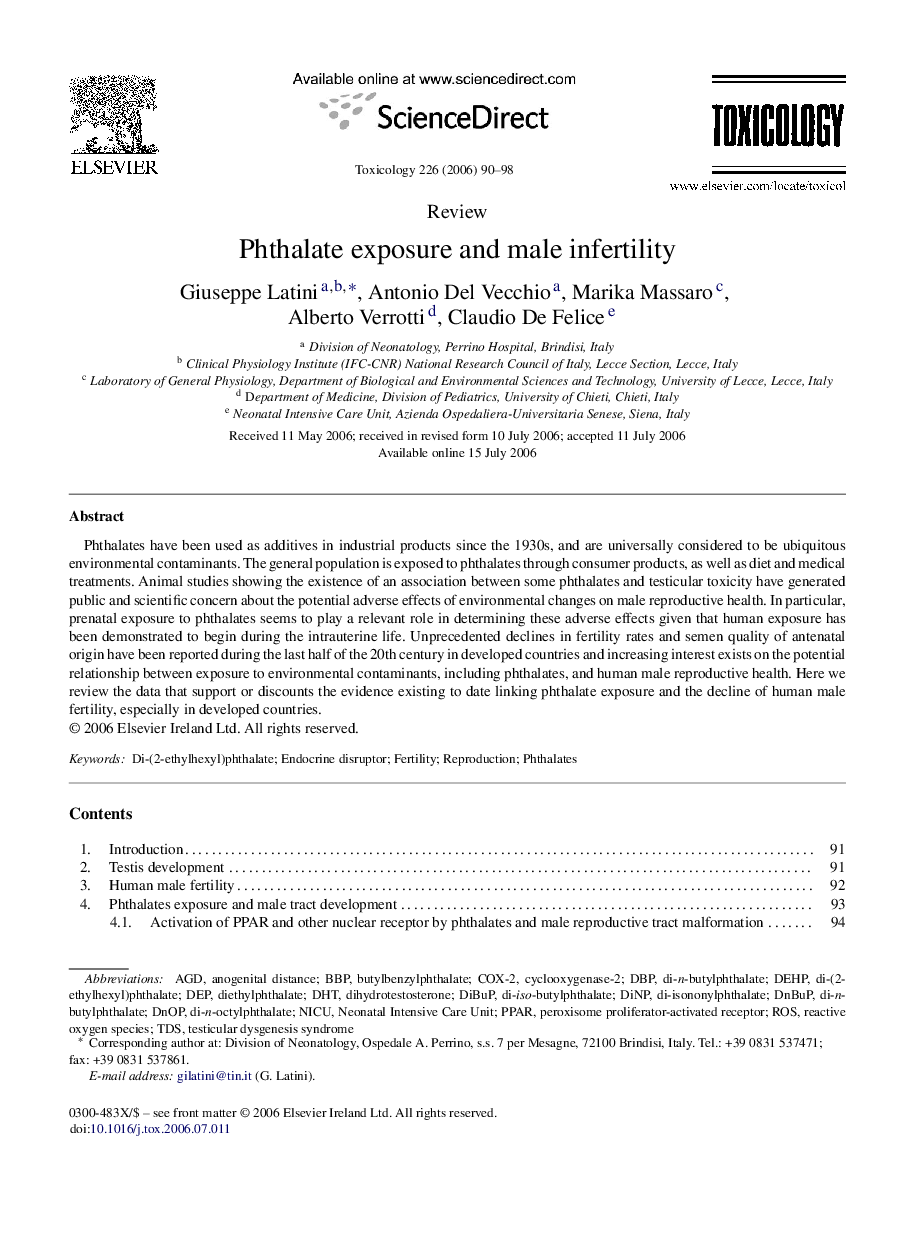| Article ID | Journal | Published Year | Pages | File Type |
|---|---|---|---|---|
| 2598103 | Toxicology | 2006 | 9 Pages |
Phthalates have been used as additives in industrial products since the 1930s, and are universally considered to be ubiquitous environmental contaminants. The general population is exposed to phthalates through consumer products, as well as diet and medical treatments. Animal studies showing the existence of an association between some phthalates and testicular toxicity have generated public and scientific concern about the potential adverse effects of environmental changes on male reproductive health. In particular, prenatal exposure to phthalates seems to play a relevant role in determining these adverse effects given that human exposure has been demonstrated to begin during the intrauterine life. Unprecedented declines in fertility rates and semen quality of antenatal origin have been reported during the last half of the 20th century in developed countries and increasing interest exists on the potential relationship between exposure to environmental contaminants, including phthalates, and human male reproductive health. Here we review the data that support or discounts the evidence existing to date linking phthalate exposure and the decline of human male fertility, especially in developed countries.
